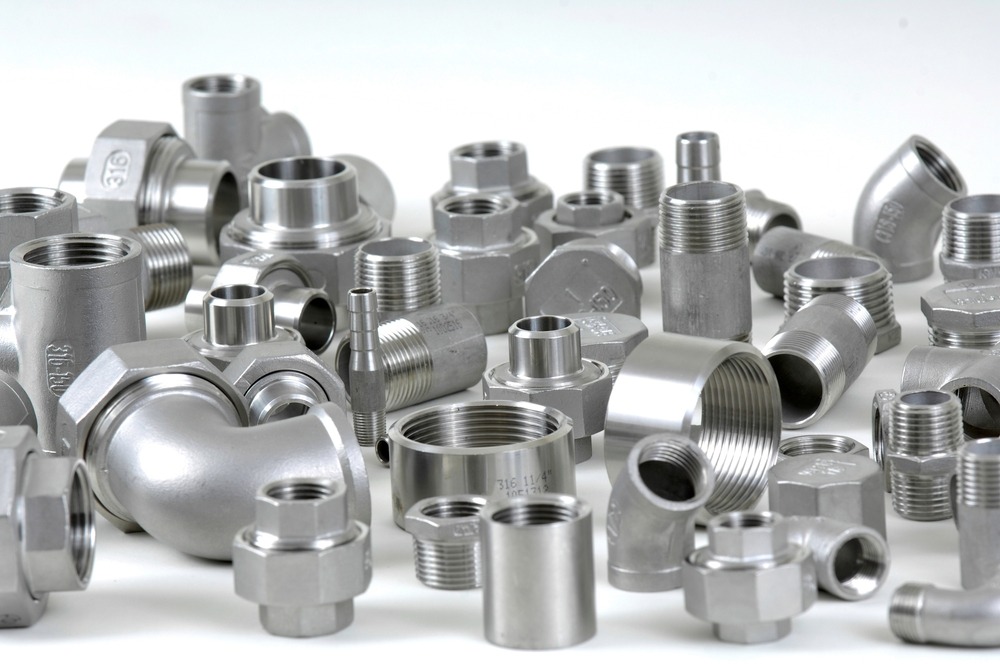
Stainless Steel Fittings Properties, Types, and Applications
Stainless steel fittings are durable and corrosion-resistant components used in piping systems to connect pipes. They are preferred in the industrial and construction sectors for reliable and long-lasting connections.
This guide explains what stainless steel fittings are, their types, properties, applications, and advantages in detail.
What are Stainless Steel Fittings?
Stainless steel fittings are components used to connect pipes, change their direction, or adjust their diameter.
Fittings provide secure and leak-proof connections in piping systems and are especially critical in chemical, food, maritime, and energy industries.
Common Features
- Corrosion Resistance: Resistant to moisture, salt, and chemicals.
- High Strength: Provides safe connections in pressurized pipe systems.
- Heat and Pressure Resistance: Maintains functionality under high temperatures and pressures.
- Easy Installation: Standard sizes and connection types allow quick and safe assembly.
- Long Lifespan: Stainless steel material ensures durability.
Types of Stainless Steel Fittings
Stainless steel fittings are manufactured in different types according to their purpose:
1. Elbow
- Used to change the direction of the pipe.
- Available in 45° and 90° angles.
2. Tee
- Connects the main pipe to branch lines.
- Available in various diameter combinations.
3. Reducer
- Used to adjust pipe diameters for compatibility.
- Available in conical or straight types.
4. Coupling
- Connects two pipe sections together.
- Available in welded or threaded options.
5. Flange
- Provides secure connections between pipes and equipment.
- Facilitates installation with bolt holes.
6. End Cap / Plug
- Used to close the ends of pipes.
Applications
Stainless steel fittings are used in various sectors for different purposes:
1. Construction and Plumbing
- Provides safe connections in water, gas, and heating systems.
2. Food and Beverage Industry
- Hygienic and stainless properties allow safe use on production lines.
3. Chemical and Petrochemical
- Provides corrosion-resistant connections in chemical piping systems.
4. Maritime and Energy
- Resistant to saltwater, suitable for ship and yacht projects.
- Provides long-lasting connections in energy piping systems.
5. Industrial Facilities
- Offers safe installation and leak-proof connections in pressurized air and fluid lines.
Advantages
- Durable and Long-Lasting: Stainless steel ensures extended service life.
- Corrosion Resistant: Safe for chemical, salty, and humid environments.
- Easy Installation: Standard dimensions and connection types allow quick assembly.
- High Pressure and Heat Resistance: Reliable solutions in industrial applications.
- Hygienic and Clean: Suitable for food and beverage production facilities.
Selection Criteria
Points to consider when selecting stainless steel fittings:
- Material Quality: 304, 316, and 316L stainless steel should be chosen according to the project.
- Connection Type: Welded, threaded, or flanged fittings are selected based on the application.
- Diameter and Size: Must be compatible with the piping system.
- Pressure and Temperature Resistance: Choose fittings suitable for the operating environment.
Pricing
Prices of stainless steel fittings vary depending on material quality, type, diameter, and supplier:
- 304 Grade: Mid-range price, suitable for general use.
- 316 Grade: Higher price, durable in chemical and marine environments.
- 316L Grade: Used in applications requiring maximum protection and long service life.
Other factors affecting price include delivery time, quantity, and connection type.
Maintenance and Storage
- Regular Cleaning: Especially important in hygienic applications.
- Protection from Chemicals: Keep away from corrosive chemicals.
- Storage: Store in a dry and ventilated environment.
Stainless steel fittings are critical components for safe, durable, and long-lasting connections in piping systems. Choosing the right material quality, type, and size ensures reliable and cost-effective solutions for your projects.
